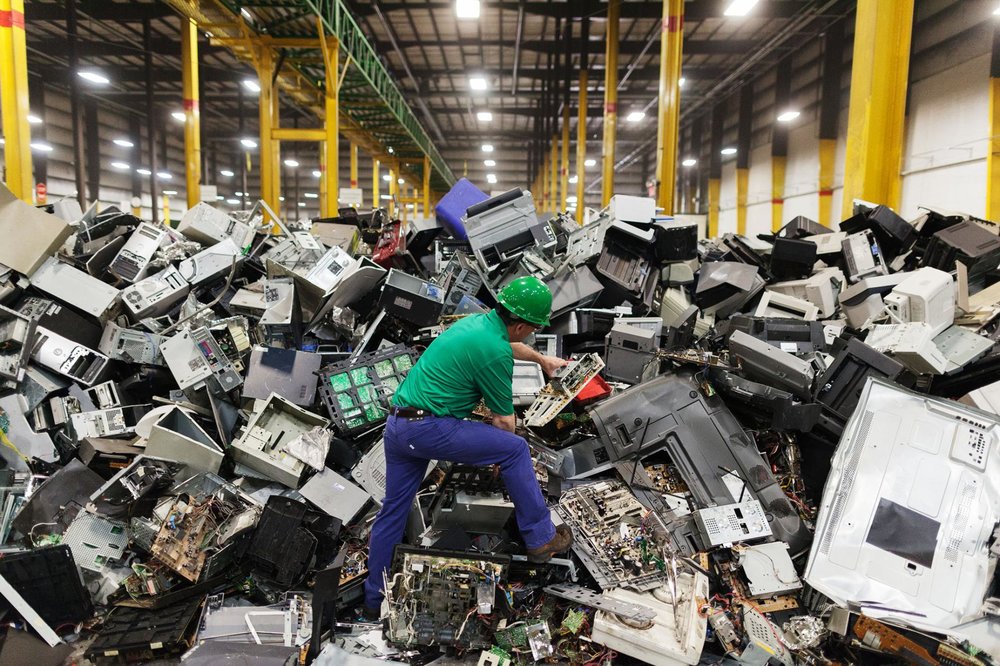
The E-Waste Crisis: Why Electronic Waste is Growing 5x Faster Than Recycling
According to the UN’s latest Global E-waste Monitor, electronic waste generation is rising five times faster than documented e-waste recycling worldwide.
The numbers are staggering and the trend is deeply concerning. According to the UN’s latest Global E-waste Monitor, electronic waste generation is rising five times faster than documented e-waste recycling worldwide. This alarming statistic reveals a critical gap in our global approach to managing the ever-growing mountain of discarded electronics.
The Scale of the Problem
In 2022 alone, the world generated 62 million tonnes of electronic waste – enough to fill 1.55 million 40-tonne trucks that would form a bumper-to-bumper line encircling the entire equator. To put this in perspective, that’s equivalent to discarding approximately 17 pounds of electronics for every person on Earth, including newborns. What makes this figure even more troubling is the trajectory. E-waste generation continues to accelerate as technology cycles shorten, devices become more disposable, and global access to electronics expands. Meanwhile, our recycling infrastructure and capabilities are struggling to keep pace with this exponential growth.
The $47 Billion Gap
Perhaps most shocking is the economic waste embedded in this crisis. The raw materials contained within discarded electronics are valued at approximately $57 billion annually. However, only about $10 billion worth of these materials are actually recovered through sustainable recycling processes.
This means we’re essentially throwing away $47 billion in recoverable resources every year – resources that include precious metals like gold, silver, and platinum, as well as critical rare earth elements that are expensive and environmentally costly to mine.
Why the Recycling Gap Exists
Several factors contribute to this widening gap between e-waste generation and recycling:
Collection Challenges: Despite growing awareness, many consumers still don’t know where or how to properly dispose of their old electronics. Rural areas often lack convenient collection points, and many people keep old devices in drawers rather than recycling them.
Infrastructure Limitations: While Europe leads in e-waste collection, followed by Asia and America, most regions lack sufficient processing capacity. The technical complexity of modern electronics requires specialized facilities that many areas simply don’t have.
Economic Barriers: Proper e-waste recycling is labor-intensive and technically demanding. In many regions, it’s more economically attractive to ship e-waste to developing countries rather than process it locally, leading to environmental and social problems.
Rapid Technology Evolution: As devices become more complex and miniaturized, they become harder to disassemble and process. New materials and manufacturing techniques often outpace recycling technology development.
The Environmental Cost of Inaction
This recycling gap has serious environmental consequences. The $47 billion in unrecovered materials means we must continue mining virgin resources, contributing to habitat destruction, water pollution, and carbon emissions. The UN estimates that proper e-waste recycling could offset 15 million tonnes of CO2 emissions – roughly equivalent to removing 3 million cars from roads for a year. Additionally, improperly disposed electronics often end up in landfills or informal recycling operations in developing countries, where toxic materials like lead, mercury, and cadmium can contaminate soil and water supplies, affecting human health and local ecosystems.
Solutions on the Horizon
Despite these challenges, there are promising developments:
Extended Producer Responsibility: More jurisdictions are implementing policies requiring manufacturers to take responsibility for their products’ entire lifecycle, incentivizing better design for recyclability.
Advanced Recycling Technologies: New automated disassembly systems and improved material recovery techniques are making e-waste processing more efficient and economically viable.
Circular Economy Initiatives: Companies are increasingly adopting repair-first policies, modular designs, and take-back programs that extend device lifespans and improve material recovery.
Consumer Awareness: Growing environmental consciousness is driving demand for more sustainable electronics and better disposal practices.
What You Can Do
As individuals and businesses, we can help close this gap:
- Extend Device Lifespans: Resist the urge to upgrade unless necessary. Proper maintenance and repairs can significantly extend electronics’ useful life.
- Choose Responsible Disposal: Always use certified e-waste recyclers when disposing of electronics. Many manufacturers and retailers offer take-back programs.
- Support Right to Repair: Advocate for legislation and support companies that make their devices easier to repair and upgrade.
- Buy Refurbished: Consider certified refurbished electronics, which extend the useful life of devices that might otherwise become waste.
The Path Forward
Closing the e-waste recycling gap will require coordinated action from manufacturers, policymakers, recyclers, and consumers. We need stronger collection systems, better recycling technologies, more sustainable product design, and changed consumer behaviors.
The good news is that this challenge also represents a massive economic opportunity. The $47 billion in currently wasted materials could fuel a thriving circular economy, creating jobs while reducing environmental impact.
As we move further into 2025, addressing the e-waste crisis must become a priority. The cost of inaction – both environmental and economic – is simply too high to ignore. By working together to close this recycling gap, we can transform what is currently our fastest-growing waste stream into a sustainable resource cycle.
The choice is ours: continue on the current trajectory toward an ever-growing mountain of electronic waste, or seize the opportunity to build a more circular, sustainable approach to our relationship with technology.